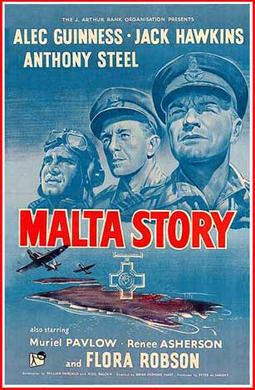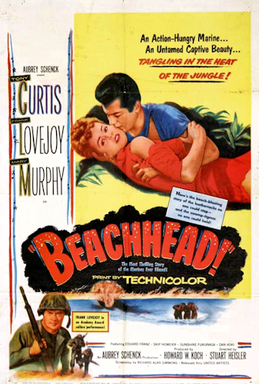I have decided to change the name of my annual
tournament to “War Movie Subgenre Tournament” instead of “March Madness”. That’s not because I was contacted by a
lawyer from the NCAA. I just have
decided it is unoriginal and I do not want to be limited to getting it in
during March.
This year’s tournament will determine the best war
movie that includes dogfight scenes. My
father was a fighter pilot so this tournament is personal for me. He flew F-105s in Vietnam. I dreamed of being a pilot myself, but faulty
genes gave me bad eyesight. I ended up
following in my father’s post pilot shoes by becoming a teacher/coach. When I was
growing up, I devoured everything I could read on WWII air combat. Unfortunately, the books I read and still
read are vastly superior to most movies on the subject of air combat. The great dogfighting movie is yet to be made and unless CGI becomes much better
in this area, may never be made.
However, I have assembled an interesting field that spans several wars
going back to WWI. I have seeded the
movies based on Rotten Tomatoes and my own gut feelings about the movies.
As usual, the format will be that
the movies compete in four different categories each round. I have chosen categories appropriate for a
dogfighting film. One of those
categories will be clichés. Having seen
eighteen dogfighting films in the last two weeks, I have compiled a list of the
most common.
Here they are:
1. A boy sees a plane and dreams of becoming a pilot.
2. There is a gruff crew chief.
3. A pilot breaks formation to go after the enemy.
4. The main character loses his best friend.
5. Fighter pilots party hard.
6. There is an evil foe.
7. A pilot is obsessed with glory.
8. One pilot is a ladies’ man.
9. There is a mid-air collision.
10. An airfield is attacked by the opposing squadron. (Often followed by a retaliatory raid.)
11. One pilot courts a local girl.
12. A fighter jock drives a motorcycle.
THE PLAY-IN GAME:
Flying Tigers (1943) vs. Flying Leathernecks (1951)
When I
proposed the tournament to my compadres on Armchair General Forums, I had
several mention these two movies as potential participants. I decided to have them compete for a spot in
the tournament. I found this intriguing
because they are similar movies and both starred John Wayne.
“Flying Tigers” was John Wayne’s first war film. As is well known, Wayne did not serve in the
military in WWII. This movie is part of
the argument that he better served his country by making “flagwaving” films
like this one. Since it is unlikely that
the uniformed Wayne would have killed as many Japanese in reality as compared
to the celluloid hero, let’s concede the argument. The fact that the movie was made in 1943
means that there were technical constraints on the effects.
The movie is meant to be a tribute to the American Volunteer Group
(popularly known as the “Flying Tigers”) and leads off with a testimonial by
Chiang Kai-shek and blathering narration. The plot is basically
the story of the leader of the unit (Wayne as Jim Gordon) and a hot shot jerk
named Woody (John Carroll). Gordon is
the empathetic head pilot who takes in black sheep pilots to shoot down
Japanese planes for the saintly (but hickish) Chinese people. Woody is a wolf who makes no secret that he
is in it just for the bounty money given for each kill. He says “get out your checkbook, General”
when he shoots down a Zero. There is a
love triangle involving a nurse named Brooke (Anna Lee). Woody wears out his charming roguishness when
he contributes to the downing and subsequent strafing while parachuting death
of the beloved exec “Hap” (Phil Kelly).
He does get a chance to redeem himself at the end and the love triangle
conundrum is solved via subtraction.
“Flying Tigers” was a big hit in a country that was
craving Japanese ass-kicking. People had
heard of the famous unit already, but if they were hoping for a history lesson
they were disappointed. None of the
characters were based on real people.
The only thing the movie gets right is the fact that the pilots were
paid a bounty for each kill. The biggest
boner is having the unit earning those bounties before Pearl Harbor. In reality, the AVG did not go into action
until after Pearl Harbor. The other
departure from reality is in the air combat depicted in the movie. That can partly be blamed on the available
technology. The effects make heavy use
of models (P-40 Warhawks) and footage (including Japanese newsreels to show the
effects of bombings). Although the movie
was nominated for an Academy Award for Best Effects, it looks decidedly
quaint. There are three ways to go in
dogfight movies: the use of models, the
use of actual planes to reenact, and the use of CGI. The use of models can be pulled off if you
are making “Star Wars”, but in this case it just looks like models. Plus models pre-Star Wars often defy the
realities of physics and look foolish doing so.
“Flying Tigers” also falls into the Old School of showing dogfights via
cockpit shots and machine guns blazing. Any
plane shot at goes down and usually with the bullet ridden body of the pilot on
board (unless you want to reenact the dastardly strafing of an American pilot
early in the war).
“Flying Tigers” is patriotic bull shit, but it is not
painful to watch. The acting is
good. Wayne is Wayne, as usual. We get to see the unique sight of Wayne acting peevish because his girl jilted him. Carroll gets the meaty role and digs his
teeth into it. The character is not
two-dimensional and although quite a cad, he has some redeeming qualities. Anna Lee is lovely and can actually act a bit
(usually not a requirement in movies like this). The plot is very predictable, but what do you
expect from a 1943 movie? I could say
the same for the dogfighting scenes, but they were done much better by movies
pre-1940s.
“Flying Leathernecks” was made eight years later
which means the air combat cinematography is better, but time does not
necessarily improve plot. It was
directed by Nicholas Ray (his only war film).
It got substantial cooperation from the USMC. The Marines gave a lot of cooperation
including providing several F6Fs (unfortunately they had not kept some F4Fs for Guadalcanal movies). The Marines
provided gun camera footage for the first time for a war film.
The plot is straight out of a submarine movie. Wayne plays Maj. Kirby who has arrived as the
new CO for a squadron scheduled for Guadalcanal. He is promoted over the head of the popular
exec Capt. Griffin (Robert Ryan) and there is dysfunction written all over
their relationship. Kirby is the
hard-ass who forces men to fly missions while they may be unhealthy and Griff
is the empathetic peer who thinks Kirby is driving the men too hard. The men also think Kirby is
unreasonable. They are fighter jocks who
signed up to shoot down Japs and he has this radical idea that the unit should
provide close air support to the “mud Marines” on Guadalcanal. Kirby is strict with anyone who strays from
this mission. He and Griff disagree on
his treatment of the men and they are due for a reconciliation by the end of
the film. It is just a matter of time before Griff realizes that command makes you a horse's ass who sheds tears in private. He has to get tougher and if it takes the death of his brother-in-law, so be it. Thankfully there is no love
triangle. The movie takes us through a
series of dogfights, strafing enemy positions, and an attack on a convoy. Mixed in are the confrontations between the
two leads and a trip back to the home front for the ladies (in the audience). The home front scenes separate the
Guadalcanal and Okinawa segments of the film.
“Flying Leathernecks” is well-acted. Wayne is basically playing Sgt. Stryker as
squadron leader. Ryan has a thankless
role, but he is solid. He was cast for his ability to stand toe to toe with Wayne. Interestingly,
the two actors’ political philosophies are reflected in their characters, but did not cause trouble on the set. The supporting cast is fine with Jay Flippen
providing unsubtle comic relief as the scrounger/crew chief and Don Taylor as
the aw-shucks fighter jock named “Cowboy” (of course). Mrs. Griffin (Janis Carter) is okay as an
actress, but has no hubba-hubba factor.
The problem with the film is the lame plot. The command clash is a hybrid of the earlier “Twelve
O’Clock High” and the upcoming “Run Silent, Run Deep”. It is very predictable. I wonder if the Marines liked the idea of a
film showing their aviators supporting their ground troops. Hey Congress, keep that funding coming! The dialogue is terrible, but it could have
been worse as the film has a puzzling dearth of cockpit chatter. I guess the Marines were Spartan when it came
to that. (We do get the laughable use of
“pancake” to refer to having to land due to lack of fuel instead of for a crash
landing without wheels.) The score is
also cringe-inducing. It matches the
hokey dialogue. There are parts of the
movie that are hard to watch, especially the home front stuff. There is a letters home montage early in the
movie that manages to empty your stomach.
You’ll just have to dry heave when Kirby returns home to his wife and
son.
As far as the combat, one big plus is the use of the
F6Fs and F4Us supplied by the Marines. I
won’t quibble too much about the fact that F4Fs were used on Guadalcanal. The movie is more historically accurate than “Flying
Tigers”. Kirby was based on Maj. John L.
Smith who was awarded the Medal of Honor and shot down 19 Japanese planes while
commanding the Cactus Air Force on Guadalcanal.
The debate over air combat versus close air support is summarized here in a simplistic way.
Hellcats and Corsairs did perform close air support. It is a dangerous and unglamorous task that fighter jocks would have been less than thrilled with. The movie uses a lot of footage (mostly gun
camera film) which means no one ever misses.
There are no swirling dog fights like you see in some WWI movies. It is similar to “Flying Tigers” in that we
see a lot of pilot faces and machine guns firing. The blending of the footage is pretty
seamless. It certainly works better
cinematically than the use of models.
Some of the footage is from the Korean War where Marine aviation did a
lot more close air support percentage-wise.
Which one make it into the tournament? This is a tough call. Tigers has a less silly plot, but the
dogfighting is primitively depicted.
Leathernecks has good dogfighting, but a laughable plot. Since this tournament is mainly about
dogfighting, I’m going to move “Flying Leathernecks” on. But I have a feeling it will pancake early.
Here is the field:
1 – Battle of Britain
16 - Flying Leathernecks
8 - Dark Blue World
9 - Red Tails
5 - The Blue Max
12 - The Red Baron
4 - Hell’s Angels
13 - Top Gun
6 - Tuskegee Airmen
11- Aces High
3 - Dawn Patrol
14 – Von Richthofen and
Brown
7 - The Hunters
10 - Flyboys
2 - Wings
15 - Angel’s Wing



